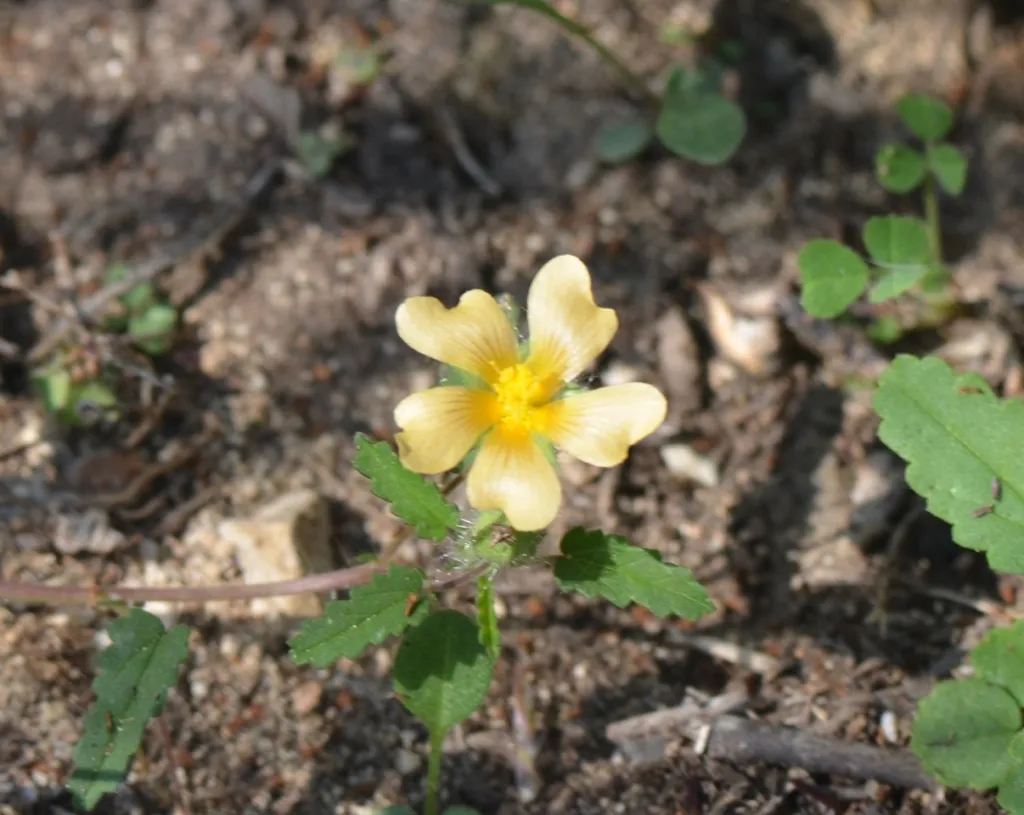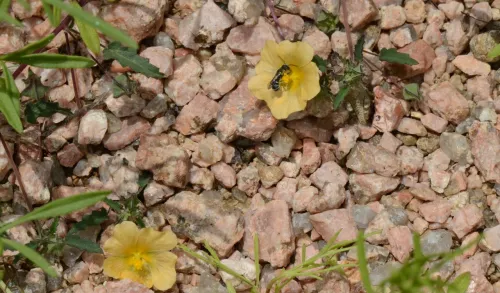By Delmar Cain
In several articles of this column I have mentioned “the right of way “ which adjoins each side of our public roads. My wife has reminded me on many occasions that my own father cautioned her to be vigilant, as I had a “wandering eye” when I drove a car. I don’t remember nor am I going to speculate about what I might have been observing when I was younger, but now I do admit to having a large dose of curiosity about what plants are growing along the roadside.
If I owned or controlled the rights of way, which obviously I don’t, I would have them covered with every kind of native plant that would survive and would not be detrimental to the structure of the road or to the safety of the public. I would eliminate the exotic invasive plants and mow only to discourage fire or to promote the greatest number of appropriately adaptable plants. Herbicides would be used sparingly and only to control the worst cases of exotic invasives.

I would consider the rights of way as public gardens, whose primary purposes included the preservation and presentation of one of our most precious heritages—our native plants.
But until I am put in control, I guess that I will remain satisfied with those species that I can find, some of which are thriving and some of which seem to be just hanging on. And although enjoying native plants as I do, at times I find myself agreeing with my friend, Glenn Sturgis, who once said that a person can have only so many Mexican hats. Of course some grasshoppers and caterpillars might disagree with us.
Two less familiar species, which I have found growing in the right of way in the past, are members of the Mallow family. I knew the more common of the two species as “sida” (Sida abutifolia), a plant found in Marshall Enquist’s book, “Wildflowers of the Texas Hill Country” [but shown with the scientific name of (Sida filicaulis)]. I was a bit surprised to find that, although the USDA Natural Resources Conservation Service plant database shows that it grows natively from Texas to California and also in Florida, sida is not listed in the database for the Wildflower Center in Austin.
In the USDA Natural Resources Conservation Service plant database, its common name is listed as a delicately descriptive “spreading fanpetals”. But don’t be deceived into thinking that it is a delicate plant. It grows in open grassy areas and on bare caliche, making it a natural for a road right of way.
Sida spreads from its base on several stems that hug the ground, sometimes reaching a length of 18 inches. Its serrate leaves are narrow and are 1/4 – 3/4 inch long. The yellow-orange flowers, which definitely resemble small fan blades, are only 1/4 – 1/2 inch wide and close in the shade of the evening.

The second species that I found on the country right of way is also listed in Enquist’s book. Commonly called Lindheimer’s sida (Sida lindheimeri), it is also known as showy fanpetals. It grows natively only in Central Texas, South Texas, in intermittent counties along the Texas Gulf Coast and in four parishes in Louisiana.
Lindheimer’s sida, named after Ferdinand Jacob Lindheimer, is not as widespread in our area as spreading fanpetals. Also a perennial, it seems to grow better in the sandy soils of its native habitats. In appearance Lindheimer’s sida looks similar to spreading fanpetals, except most of the stems are erect, reaching a height up to 18 inches. The long narrow leaves are 1 – 2 inches in length.
With a common name like showy fanpetals, one would expect a larger flower than that of the small flower of sida. The pale yellow-orange flowers of the showy fanpetals are 1 – 1 1/2 inch in diameter, but still resemble the blades of a fan. Perhaps the larger sized flowers come with a cost to the plant, since Lindheimer’s sida blooms only from May to August. Sida blooms from March to October.
Hopefully, I will still be able to find these two less familiar right of way plants in spite of the county’s recent herbicide treatment. In any event I saved some seeds. A positive ending to this story could be that if you can’t control and preserve the habitat, at least save some seeds.
